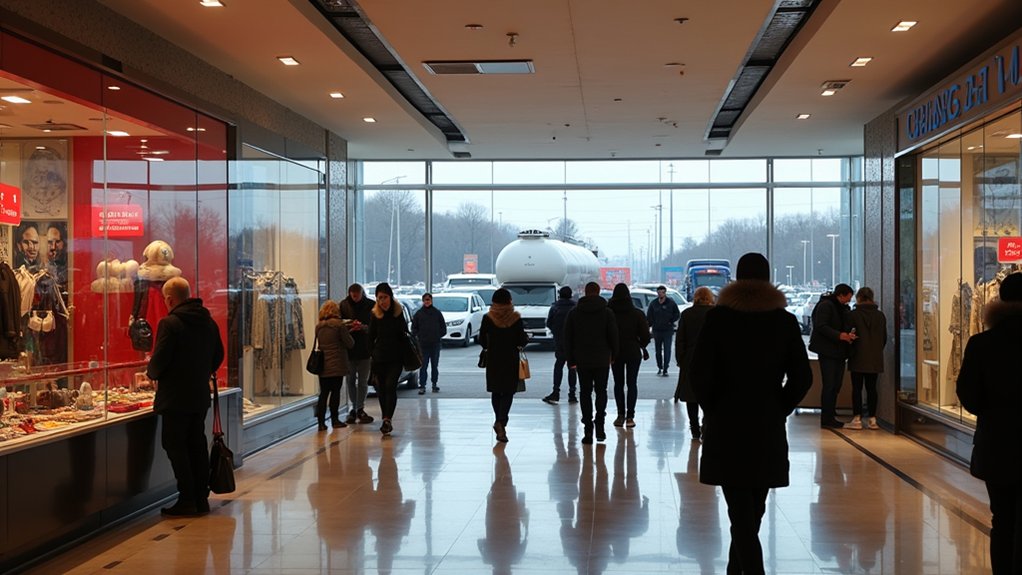Russia’s wartime economy keeps chugging along through sheer brute force and clever maneuvering. The Kremlin pumped massive funding into military production, transforming civilian factories into weapons manufacturers. Energy exports found new buyers despite Western sanctions, while ghost ships smuggle oil to willing customers. Sure, inflation’s soaring and workers are scarce, but when you’re spending a third of your budget on tanks instead of tractors, survival trumps sustainability. The real costs lurk beneath the surface.

While Western sanctions were meant to cripple Russia’s economy, the Kremlin had other plans. Instead of collapsing, Russia’s GDP grew by more than 4% in 2023. How? By throwing mountains of money at its military-industrial complex. Defense spending now gobbles up nearly a third of the federal budget, with military expenditures skyrocketing 70% in 2023 alone.
Talk about putting all your eggs in one basket. The Russian economy has fundamentally become a war machine, with military production driving one-fifth of all economic growth. This massive spending spree has created a bizarre economic sugar rush – factories churning out tanks instead of tractors, missiles instead of microwaves. The manufacturing sector, which took a hit when Western companies fled in 2022, found new life in producing weapons rather than washing machines.
Russia’s economy has transformed into a military behemoth, swapping consumer goods for weapons in a desperate bid for survival.
But this wartime boom comes with serious drawbacks. Inflation is surging, especially food prices, which are rising 1.5 times faster than overall consumer prices. The labor market is squeezed tight as a drum – between mass emigration and military conscription, there simply aren’t enough workers to go around. High interest rates from the Central Bank aren’t helping either, choking off investment in non-military sectors. The National Wealth Fund has depleted to under 4 trillion rubles, leaving insufficient reserves for future crises.
Yet Russia keeps chugging along, mostly thanks to its energy exports. Despite Western attempts to cut off Russian oil and gas, the Kremlin found willing buyers elsewhere. These energy revenues, combined with careful management of foreign reserves and new trade partnerships, have kept the economy afloat. Moscow has increasingly turned to ghost ship tankers to bypass Western sanctions on oil exports.
Transportation, communications, and IT sectors even grew by 10%, adapting to new trade routes and infrastructure needs.
The big question is: how long can this last? The current model looks increasingly unbalanced – military industries are booming while civilian sectors stagnate. Fiscal deficits are piling up, and inflation threatens to spiral.
But for now, at least, Russia’s wartime economy has proven surprisingly resilient, even if it means trading long-term stability for short-term survival.





